Related Research Articles

Seismic retrofitting is the modification of existing structures to make them more resistant to seismic activity, ground motion, or soil failure due to earthquakes. With better understanding of seismic demand on structures and with our recent experiences with large earthquakes near urban centers, the need of seismic retrofitting is well acknowledged. Prior to the introduction of modern seismic codes in the late 1960s for developed countries and late 1970s for many other parts of the world, many structures were designed without adequate detailing and reinforcement for seismic protection. In view of the imminent problem, various research work has been carried out. State-of-the-art technical guidelines for seismic assessment, retrofit and rehabilitation have been published around the world – such as the ASCE-SEI 41 and the New Zealand Society for Earthquake Engineering (NZSEE)'s guidelines. These codes must be regularly updated; the 1994 Northridge earthquake brought to light the brittleness of welded steel frames, for example.

A response spectrum is a plot of the peak or steady-state response of a series of oscillators of varying natural frequency, that are forced into motion by the same base vibration or shock. The resulting plot can then be used to pick off the response of any linear system, given its natural frequency of oscillation. One such use is in assessing the peak response of buildings to earthquakes. The science of strong ground motion may use some values from the ground response spectrum for correlation with seismic damage.
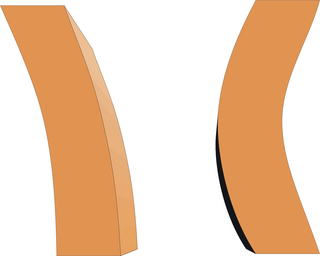
Seismic analysis is a subset of structural analysis and is the calculation of the response of a building structure to earthquakes. It is part of the process of structural design, earthquake engineering or structural assessment and retrofit in regions where earthquakes are prevalent.
Earthquake engineering is an interdisciplinary branch of engineering that designs and analyzes structures, such as buildings and bridges, with earthquakes in mind. Its overall goal is to make such structures more resistant to earthquakes. An earthquake engineer aims to construct structures that will not be damaged in minor shaking and will avoid serious damage or collapse in a major earthquake. A properly engineered structure does not necessarily have to be extremely strong or expensive. It has to be properly designed to withstand the seismic effects while sustaining an acceptable level of damage.
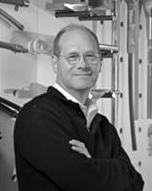
William Frazier Baker, also known as Bill Baker, is an American structural engineer known for engineering the Burj Khalifa, the world's tallest building/man-made structure. He is currently a structural engineering partner in the Chicago office of Skidmore, Owings & Merrill, LLP (SOM).
George W. Housner was a professor of earthquake engineering at the California Institute of Technology and National Medal of Science laureate.
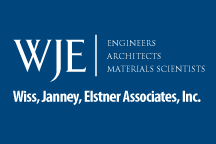
Wiss, Janney, Elstner Associates, Inc. (WJE) is an American corporation of architects, engineers, and materials scientists specializing in the investigation, analysis, testing, and design of repairs for historic and contemporary buildings and structures. Founded in 1956, WJE is headquartered in Northbrook, Illinois, and has over 600 professionals in twenty offices across the United States. WJE personnel are specialized in architectural, structural, and civil engineering; materials conservation, chemistry and petrography, and testing and instrumentation.

The Earthquake Engineering Research Institute (EERI) is a leading technical society in dissemination of earthquake risk and earthquake engineering research both in the U.S. and globally. EERI members include researchers, geologists, geotechnical engineers, educators, government officials, and building code regulators. Their mission, as stated in their 5-year plan published in 2006, has three points: "Advancing the science and practice of earthquake engineering; Improving understanding of the impact of earthquakes on the physical, social, economic, political, and cultural environment; and Advocating comprehensive and realistic measures for reducing the harmful effects of earthquakes".
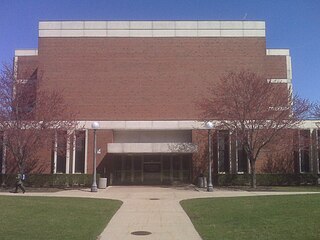
The Nathan M. Newmark Civil Engineering Laboratory, or Newmark Lab, located at 205 N. Mathews Avenue in Urbana, Illinois on the campus of the University of Illinois at Urbana–Champaign, houses the university's Department of Civil and Environmental Engineering. The Lab was built in 1967, and has been modified and updated a number of times since then. The facility was named after professor and department head Nathan M. Newmark after his death.
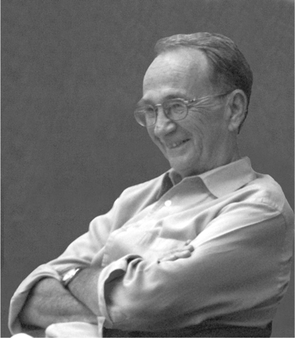
C. (Carl) Allin Cornell was a civil engineer, a researcher, and a professor who made important contributions to reliability theory and earthquake engineering and, along with Dr. Luis Esteva, developed the field of Probabilistic Seismic Hazard Analysis in 1968.
The Structural Engineers Association of Northern California (SEAONC) is a structural engineering association established in 1930. Its headquarters are in San Francisco, California. Initially a club for structural engineers to exchange technical information, it evolved into a professional organization advising on the development of building code requirements and California legislation related to earthquake hazard reduction such as the Field Act and Alquist Priolo Special Studies Zone Act.
A braced frame is a structural system designed to resist wind and earthquake forces. Members in a braced frame are not allowed to sway laterally.
Michel Soto Chalhoub is a civil engineer who pioneered modern practice in shock, vibration, and seismic design using energy dissipating devices [ref]. He developed his methodologies while at the University of California, Berkeley, where he earned his Ph.D. in dynamics and seismic design.
Mete Avni Sözen was Kettelhut Distinguished Professor of Structural Engineering at Purdue University, Indiana, United States from 1992 to 2018.

Ashraf Habibullah is a Pakistani-American structural engineer and software developer best known as the founder, President, and CEO of Computers and Structures, Inc., a structural and earthquake engineering software company based in Berkeley, California. Upon founding the privately held company in 1975, Ashraf co-created the first structural-engineering software available to the personal computer, and has since created a suite of products, and developed their capabilities. Notably, ETABS, a multi-story building analysis and design software, received recognition as one of the Applied Technology Council and Engineering News-Record Top Seismic Products of the 20th Century. Today, CSI is recognized globally as the pioneer in the development of software for structural and earthquake engineering. CSI's software is used by thousands of engineering firms and is the choice of sophisticated design professionals in over 160 countries. Ashraf has a deep personal interest in the study of human psychology and human behavior and how they can be leveraged to help people from all walks of life reach their maximum potential.
Seismic codes or earthquake codes are building codes designed to protect property and life in buildings in case of earthquakes. The need for such codes is reflected in the saying, "Earthquakes don't kill people—buildings do." Or in expanded version, “Earthquakes do not injure or kill people. Poorly built manmade structures injure and kill people.”

Michael John Nigel Priestley was a New Zealand earthquake engineer. He made significant contributions to the design and retrofit of concrete structures, and developed the first displacement-based method of seismic design.
Andrew Stuart Whittaker is an American structural engineer who is currently a SUNY Distinguished Professor in the Department of Civil, Structural and Environmental Engineering at the University at Buffalo, State University of New York.

Reginald DesRoches is an American civil engineer who, as of July 1, 2022, serves as the president at Rice University. From 2020 until 2022, he served as provost of Rice. Earlier, beginning in 2017, he was the dean of engineering at the Rice's school of engineering, and from 2012 to 2017, DesRoches was the Karen and John Huff Chair at the Georgia Institute of Technology.
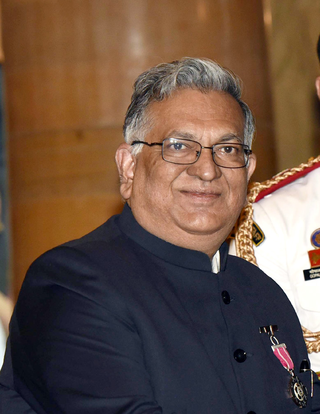
Sudhir Kumar Jain, referred to as Sudhir K. Jain is the incumbent and 28th Vice-Chancellor of Banaras Hindu University. He is a civil engineer by education and has formerly served three terms as the founding director of the Indian Institute of Technology Gandhinagar. He has carried out intensive research and development in the fields of seismic design codes, dynamic of buildings, and post-earthquake studies. Beside these, Jain has actively participated in teaching, research activities and development in earthquake engineering focused on developing countries. He is an elected fellow of Indian National Academy of Engineering. He was also elected a member of U.S. National Academy of Engineering (2021) for leadership in earthquake engineering in developing countries.
References
- ↑ "Jack Moehle". Jack Moehle.
- ↑ "Jack Moehle, UC Berkeley Profile". UC Berkeley.
- ↑ "PEER - Jack Moehle". PEER.
- ↑ "NAE, Jack Moehle". NAE, Jack Moehle.
- ↑ Jack Moehle, Ph.D. Seismic Design of Reinforced Concrete Buildings (McGraw-Hill Education: New York, Chicago, San Francisco, Athens, London, Madrid, Mexico City, Milan, New Delhi, Singapore, Sydney, Toronto, 2015).
- ↑ "FEMA P-58". FEMA P-58.
- ↑ "New PEER Report 2017/06: "Guidelines for Performance-Based Seismic Design of Tall Buildings"". Pacific Earthquake Engineering Research Center.
- ↑ "ACI Fellows". ACI Fellows.
- ↑ "EERI Award Recipients". EERI Award Recipients.
- ↑ "UIUC Distinguished Alumni by Year". UIUC Distinguished Alumni by Year.
- ↑ "SEAOC Fellows". SEAOC Fellows.
- ↑ "Jack P. Moehle: 'Seismic' Skyscraper Engineer". Jack P. Moehle: 'Seismic' Skyscraper Engineer.
- ↑ "Jack Moehle and CEE Alumni Win Prestigious SEAONC Award". Jack Moehle and CEE Alumni Win Prestigious SEAONC Award.
- ↑ "Jack Moehle to receive the 2020 George W. Housner Medal". Jack Moehle to receive the 2020 George W. Housner Medal.